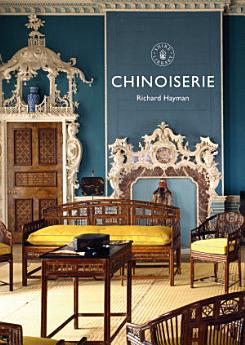Chinoiserie
มิ.ย. 2021 · Bloomsbury Publishing
eBook
64
หน้า
reportคะแนนและรีวิวไม่ได้รับการตรวจสอบยืนยัน ดูข้อมูลเพิ่มเติม
เกี่ยวกับ eBook เล่มนี้
Chinoiserie, a decorative style inspired by the art of the Far East, gripped Britain from the late seventeenth to the early nineteenth century. Despite taking its name from the French word for 'Chinese', the style also incorporated influences from other Asian countries, helping to shape the period's popular fantasy of the 'exotic Orient'. Wealthy consumers jostled to obtain imported wallpaper, lacquered cabinets and hand-painted porcelain, while domestic manufacturers such as Royal Worcester and Chippendale met demand with mass-produced items of their own. Though interest in the style waned as the Gothic Revival took hold, many examples of Chinoiserie have been preserved.
In this beautifully illustrated book, Richard Hayman tells the story of this fascinating phenomenon, and explores the profound impact of Chinoiserie on the material culture of the West.
In this beautifully illustrated book, Richard Hayman tells the story of this fascinating phenomenon, and explores the profound impact of Chinoiserie on the material culture of the West.
เกี่ยวกับผู้แต่ง
Richard Hayman is an independent historian and archaeologist who writes about the cultural history of buildings and places in Britain. He has written several titles for Shire, including Rood Screens, Wrought Iron and Illuminated Manuscripts.
ให้คะแนน eBook นี้
แสดงความเห็นของคุณให้เรารับรู้
ข้อมูลในการอ่าน
สมาร์ทโฟนและแท็บเล็ต
ติดตั้งแอป Google Play Books สำหรับ Android และ iPad/iPhone แอปจะซิงค์โดยอัตโนมัติกับบัญชีของคุณ และช่วยให้คุณอ่านแบบออนไลน์หรือออฟไลน์ได้ทุกที่
แล็ปท็อปและคอมพิวเตอร์
คุณฟังหนังสือเสียงที่ซื้อจาก Google Play โดยใช้เว็บเบราว์เซอร์ในคอมพิวเตอร์ได้
eReader และอุปกรณ์อื่นๆ
หากต้องการอ่านบนอุปกรณ์ e-ink เช่น Kobo eReader คุณจะต้องดาวน์โหลดและโอนไฟล์ไปยังอุปกรณ์ของคุณ โปรดทำตามวิธีการอย่างละเอียดในศูนย์ช่วยเหลือเพื่อโอนไฟล์ไปยัง eReader ที่รองรับ








